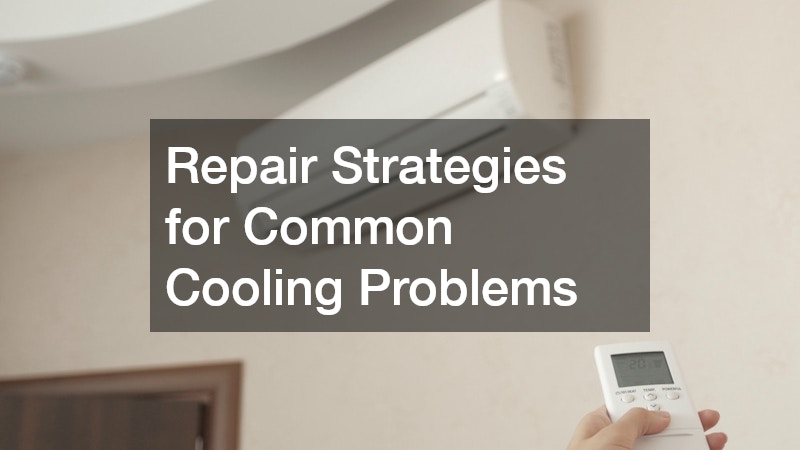HVAC systems play a crucial role in maintaining comfort and air quality in residential and commercial buildings. Professional diagnosis and repair are essential to address complex issues and ensure the longevity and efficiency of these systems. Without timely repairs, minor problems can escalate into major issues, leading to increased energy bills and potentially costly replacements.
How Technicians Identify and Diagnose HVAC Issues
Initial Inspection and System Analysis
HVAC companies begin diagnosing issues with a thorough initial inspection and system analysis. They check visible components for signs of wear or damage and listen for unusual noises.
This preliminary analysis helps technicians pinpoint any immediate problems and determine the next steps for a more detailed diagnosis.
The use of specialized tools during the inspection, like multimeters and pressure gauges, allows technicians to assess electrical components and system pressures accurately. These measurements offer a quantitative insight that visual inspection alone cannot provide. Technicians may also use temperature probes to ensure system components are operating within expected thermal parameters.
Following the initial inspection, a system analysis is conducted to evaluate the overall performance of the HVAC system. This involves checking system airflow and verifying thermostat settings. The analysis aids technicians in understanding how well each component integrates and operates as part of the whole system.
Common Diagnostic Techniques and Tools
HVAC professionals employ various diagnostic techniques to accurately identify system malfunctions. One of the primary methods is pressure reading, which assesses the pressure levels in refrigerant lines to uncover leaks or blockages. Thermography, another critical tool, helps visualize thermal variations across components, potentially highlighting overheating elements or areas of energy loss.
Another common technique is system performance testing, which involves evaluating the output and efficiency of the system under different conditions. Technicians may also use advanced software tools to run diagnostics, gathering data from intelligent sensors installed in modern HVAC systems. This data-driven approach allows for precise identification of hidden issues that could go unnoticed with traditional techniques.
An integral part of diagnostics is regular maintenance checks, which include cleaning components and replacing worn parts. These preventative measures help in early detection of potential issues, reducing the likelihood of sudden failures. Regular maintenance not only aids in diagnosing problems but also ensures consistent system performance and improved energy efficiency.
The Most Common Heating Problems and Their Solutions
Recognizing Signs of Heating System Failures
One of the first signs of heating system failure is the presence of unusual noises during operation. Clinking, banging, or screeching sounds often indicate mechanical issues or the failure of internal components. Consistent noise disturbances necessitate a prompt investigation by professionals to prevent further damage.
Another common symptom is inconsistent temperatures throughout a building, with certain rooms feeling colder than others. This imbalance is typically a result of ductwork issues or thermostat malfunctions. Uneven heating not only affects comfort but also indicates underlying inefficiencies in the heating system.
The most noticeable sign is a sudden spike in energy bills despite normal use, suggesting significant energy waste. This escalation is often caused by worn parts that force the system to work harder to maintain set temperatures. Addressing these inefficiencies is crucial in mitigating costs and preventing unnecessary strain on the heating system.
Effective Repair Methods for Heating Systems
One effective repair method for heating systems is the replacement of malfunctioning components like thermostats, heat exchangers, or blower motors. Replacing these parts can restore functionality and improve efficiency. In many cases, such targeted repairs can extend the life of the system and delay the need for a complete replacement.
Cleaning and servicing the system is another common solution to heating problems. This includes clearing blockages in vents, replacing filters, and ensuring ductwork is intact and unobstructed. Regular cleaning prevents the buildup of debris that can impede airflow and reduce system efficiency.
Energy optimization techniques, such as calibrating the system to ensure it runs at optimal settings, also play a vital role in solving heating issues. Professionals might recommend the installation of a programmable thermostat, which provides more precise control over heating schedules and can lead to significant energy savings. This approach not only resolves existing issues but also enhances overall system performance.
How Professionals Handle Cooling System Malfunctions
Identifying Cooling System Issues
One of the primary indicators of cooling system malfunctions is the presence of warm air blowing from vents. This often points to issues with the refrigerant levels, compressor, or air ducts. Professional technicians use diagnostic tools to measure refrigerant charge and assess the integrity of cooling components.
Another sign of cooling problems includes water leaks or excessive moisture around the HVAC unit. This is usually a result of blocked drainage tubes or leaks in the refrigerant line. Addressing these leaks is crucial to prevent mold growth and maintain system efficiency.
Repair Strategies for Common Cooling Problems
Refilling the refrigerant is a common repair strategy for cooling systems with low refrigerant levels. A precise recharge improves cooling efficiency and minimizes strain on system components. Certified technicians handle refrigerant refill procedures to comply with environmental regulations and ensure safety.
Another effective strategy is calibrating or replacing faulty thermostats to enhance cooling control. Proper calibration aligns the thermostat settings with actual indoor conditions, offering more consistent cooling. Advanced thermostats with smart technology can also offer improved cooling efficiency through adaptive algorithms.
The importance of professional HVAC diagnostics and repairs cannot be overstated, given their role in preventing costly breakdowns and inefficiencies. Regular maintenance and timely intervention help to sustain optimal performance and extend the system’s lifespan. Property owners are encouraged to schedule periodic professional inspections to preemptively identify issues before they escalate.

